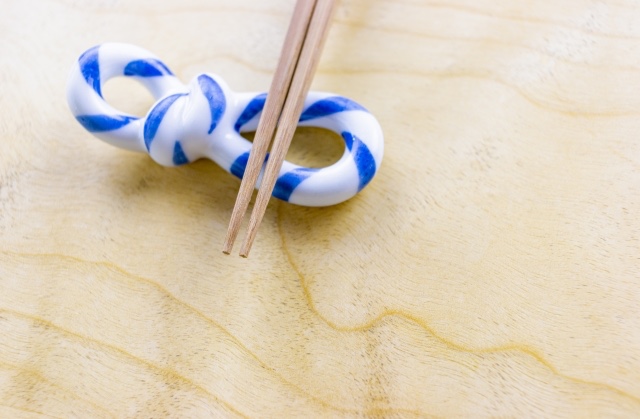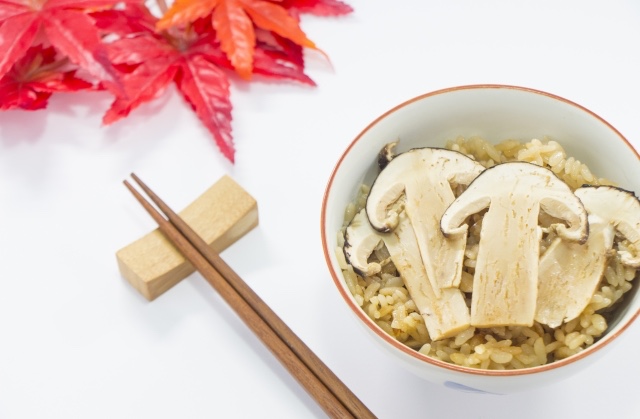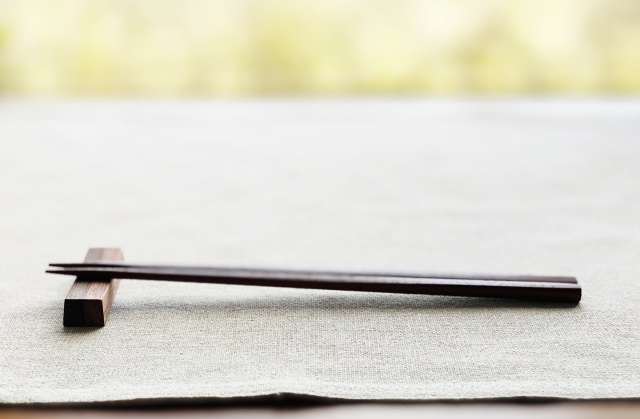Chopstick rests are tools that play an important role in Japanese food culture. They are small utensils used to place chopsticks on the table during meals. Chopstick rests keep the chopstick tips clean and convenient for use during meals.
Chopstick rests are made from a variety of materials, with porcelain, ceramics, wood, and metal being the most common. Designs are also diverse, with traditional patterns and simple designs to suit individual preferences.
In Japan, chopstick rests are considered an important part of the dining experience and are used as part of the presentation and etiquette of a beautiful meal. Chopstick rests also serve to keep tables and tableware clean and enhance the dignity of the meal.
History of Chopstick Rests

Chopstick rests have a long history, and their use in Japan is said to have begun in the Edo period (late 17th century). At that time, chopstick rests were used in upscale homes and ryotei (Japanese-style restaurants), and gradually spread to the dining tables of the general public.
There are several theories about the origin of chopstick rests. One theory is that chopstick rests originated from a stand for tea scoops used in the Chinese tea ceremony. It is said that the tea ceremony used a platform to hold a tea scoop, which was also applied to chopsticks.
Another theory is that chopstick rests were made to keep chopsticks clean during use. In olden days in Japan, it was considered that chopsticks should not be placed directly on the table when eating. Therefore, it is believed that chopstick rests came into use as small utensils for placing chopsticks.
Chopstick rests were initially made with simple designs, but from the mid-Edo period onward, craftsmen began to create elaborate decorations. Today, chopstick rests are made in a variety of materials, shapes, and designs in addition to traditional designs.
Chopstick rests play an important role in Japanese food culture and are a part of enhancing the beauty and manners of the dining table. They are also widely used in Japan and abroad as a tool for keeping chopsticks clean and for enjoying meals.
How to use chopstick rests

The use of the chopstick rest is as follows
- Hold the chopsticks to be used when eating.
- When not in use or when temporarily placing chopsticks down, prepare a chopstick rest near the table.
- Always use the chopstick rest to keep the chopstick tips clean.
- When you are finished using the chopsticks, gently place the chopstick tips on the chopstick rest. Do not place chopsticks directly on the table; always use the chopstick rest.
- When you resume eating, remove the chopsticks from the chopstick rest. This keeps the chopsticks clean and ready for use.
If you cannot find a chopstick rest in a Japanese restaurant, ask the waiter in Japanese, “Hashioki ari masuka? (meaning, “Do you have chopstick rests?”) in Japanese. In Japanese, chopstick rests are called “Hashioki.
Restaurants that value tradition and custom are likely to provide chopstick rests. However, an increasing number of restaurants do not provide chopstick rests these days.
Japanese chopstick rests – a beautiful and practical souvenir

Japanese chopstick rests are the perfect souvenir item. Filled with rich Japanese food culture and traditional craftsmanship, chopstick rests are both beautifully designed and practical.
Chopstick rests are an important part of Japanese dining etiquette and manners. Filled with stylish designs, traditional patterns, and the warmth of handmade craftsmanship, chopstick rests are an item that adds character to the Japanese dining table.
Furthermore, chopstick rests are also practical items. It provides a clean place to place chopsticks during meals and serves to protect the chopstick tips. They are also compact and easy to carry, making everyday dining more comfortable.
We encourage you to choose Japanese chopstick rests as souvenirs. You will be able to find your favorite one from a variety of unique designs and materials. They are ideal as gifts for family and friends, or as a treat for yourself.
Please consider Japanese chopstick rests as a souvenir that combines beauty and practicality. You will enjoy the wonderful experience of experiencing Japanese food culture and traditions.